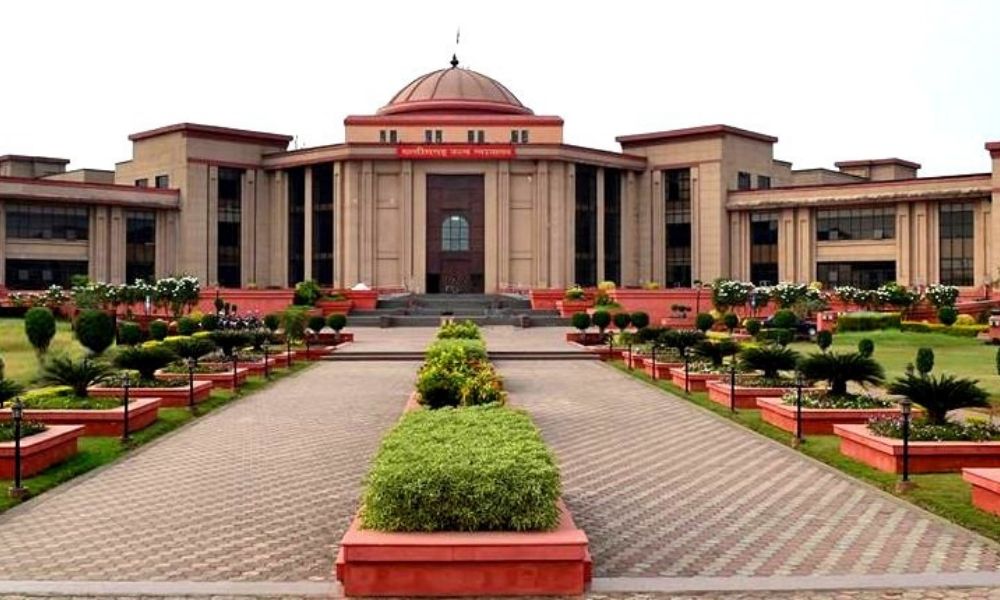Prerna Gala
Published on: September 5, 2022 at 21:21 IST
The High Court recognised that a Hindu marriage may be dissolved in accordance with custom and that sub-section 2 of Section 29 of the Hindu Marriage Act, 1955, permits customary divorce.
According to a recent decision by the Chhattisgarh High Court, a Hindu couple may choose to divorce using customary means, and the decision will be accepted if the custom can be proven and does not conflict with public policy.
According to a division bench of Justices Goutam Bhaduri and Radhakishan Agrawal, Subsection 2 of Section 29 of the Hindu Marriage Act, 1995 permits divorce in conformity with societal customs.
“It is manifestly clear from plain reading of Sub-section 2 of Section 29 of the Act of 1955, that a marriage can still be dissolved in accordance with the custom governing the parties or under any other law providing for the same.”
“The operating words of Sub-section (2) of section 29 of the Act of 1955 i.e. ‘nothing contained in this Act shall be deemed to affect any right recognised by custom’ would lead to demonstrate that the provisions of the Act do not nullify the existence of any custom which confers a right on a party to obtain a dissolution of a Hindu marriage.”
“Normally according to the Hindu Marriage Act, the dissolution of a marriage by the custom is not recognized but the saving clause of sub-section (2) of section 29 recognises the customary divorce unless it is against the public policy,” the bench said.
The Court claims that this section permits a Hindu marriage to be dissolved in line with the parties’ regional customs or under Section 13 of the Act of 1955.
“Section 29(2) of the Act of 1955 does not disturb the practice of customary divorce occupied before the Act came into force. In other words the explanation carved out by sub section (2) of section 29 operates as an effect that there has been in fact customary divorce can be given effect to,”
Furthermore, the Judges said, adding, “For a custom to have a colour of a rule of law, it is necessary for a party claiming it to plead and thereafter to prove such custom is ancient.”
The couple’s 1994 “Chhod Chutti,” or “Chhod Chutti,” traditional divorce agreement was not recognised by the lower court, and the husband appealed that decision. The appeal was brought by the husband.
The husband contended that because Chhod Chutti was typical in his community and recognised by the Hindu Marriage Act, it was acceptable.
However, the wife claimed that the conventional divorce was illegal because the husband had deceptively obtained her signature on a blank piece of paper. The pair wed on May 15, 1982, and began living apart in the 1990s as a result of their differences.
The husband sought for divorce before a Family Court, but that court ultimately issued an ex-parte decision against the wife. granting divorce because their job did not recognise a conventional divorce. The ex-parte order was challenged by filing an application pursuant to Order 9 Rule 13 of the Code of Civil Procedure, which was approved by the Family Court.
The High Court bench noted that the signatures weren’t obtained on blank documents and that the trial court had rejected the wife’s claim.
The fact that the mother and wife both said that Chhod Chutti was a typical practise in their neighbourhood was further emphasised.
It also considered the testimony of the divorce deed’s witnesses, who said that the community recognised the customary divorce.
The Court then started to consider the case’s facts, Chhod Chutti.
The bench noted that the evidence “would suggest that the parties have been apart for a considerable amount of time and with the passage of time it does not show that there is any intention of reunion.”
As a result, the Court stated, “Under these circumstances, we are inclined to approve this appeal.”

